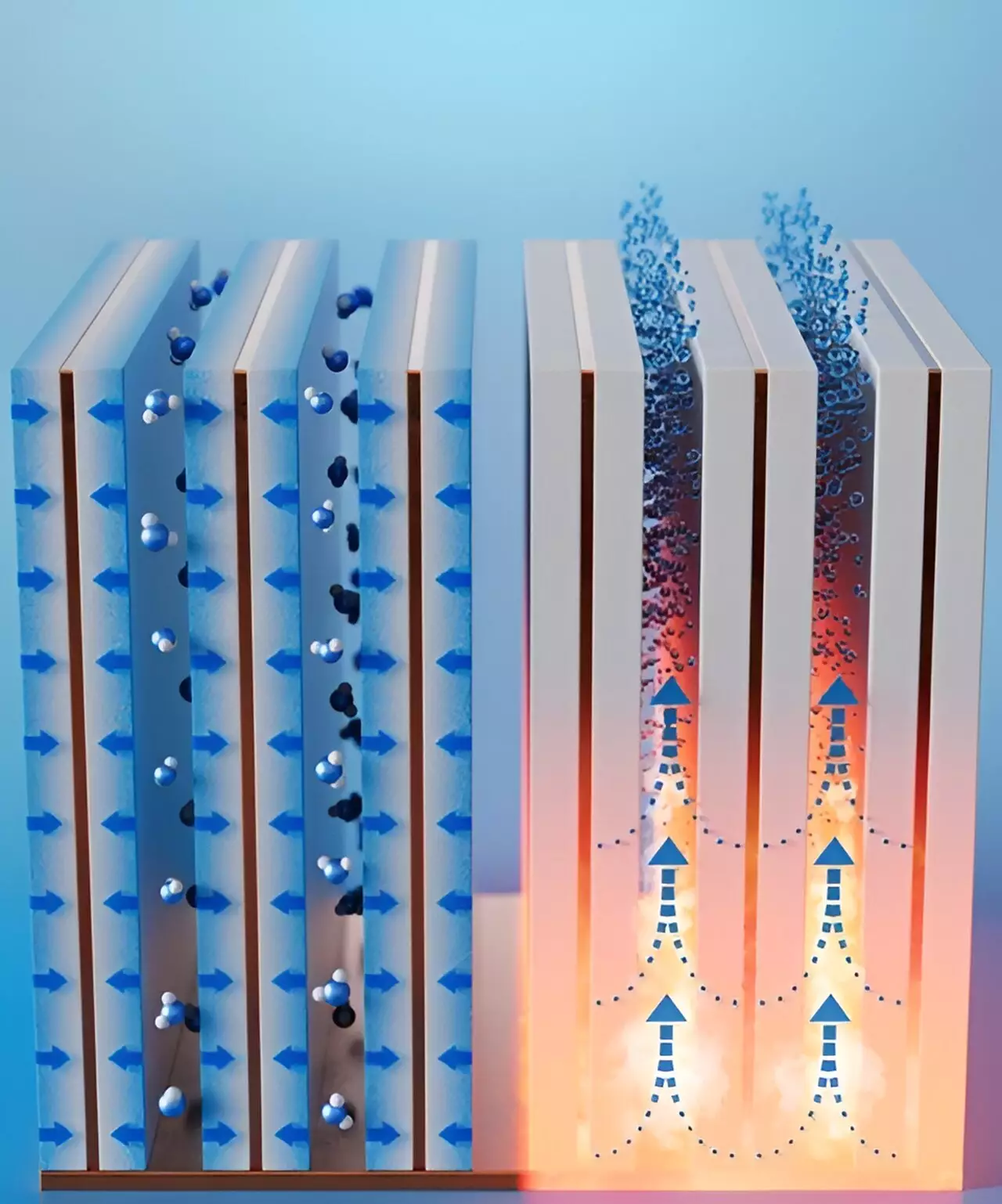Clean, safe water is a scarce resource, essential for all living beings. The access to this vital resource depends on various factors, especially the availability of local bodies of water. However, in arid regions where water scarcity is a pressing issue, researchers have come up with an innovative solution to harvest water from the air itself.
Earth’s atmosphere contains a vast amount of fresh water in the form of vapor. Despite this abundance, collecting this colorless and dilute gas is a challenging task. Traditional methods of trapping dew or fog have limitations, especially in dry areas where these natural occurrences are scarce. This is where advanced materials like temperature-responsive hydrogels, metal-organic frameworks, and zeolites come into play. These materials have the capacity to extract moisture from the air and release it when heated.
The Innovative Solution
Xiangyu Li, Bachir El Fil, and their team of researchers have developed a compact and efficient device for harvesting water from the air. The key component of their device is the water-adsorbent “fins,” which consist of a copper sheet sandwiched between copper foams coated with a zeolite material. This unique design allows for quick and effective water harvesting, making it a practical solution for water-scarce regions.
Proof of Concept
The researchers conducted proof-of-concept demonstrations using a device equipped with 10 small adsorbent fins placed on a copper base plate. These fins were able to capture moisture from desert-like air with 10% relative humidity and release it when the base reached a temperature of 363 Fahrenheit. Through multiple collection-release cycles, the team calculated that 1 liter of absorbent coating could produce up to 1.3 liters of potable water per day in air with 30% relative humidity. This volume is significantly higher than what was previously achieved by similar devices.
The development of this water harvesting device opens up new possibilities for rapid moisture capture and water generation in arid regions. With further advancement and integration into existing infrastructures that produce waste heat, such as buildings or vehicles, this system could become a cost-effective solution for water scarcity. The researchers envision a future where such devices play a vital role in meeting the growing demands for water in arid locations.
The innovative approach to water harvesting presented by Xiangyu Li, Bachir El Fil, and their team marks a significant step towards addressing water scarcity challenges. By harnessing the power of advanced materials and design principles, this technology has the potential to revolutionize the way we access and utilize water resources.


Leave a Reply